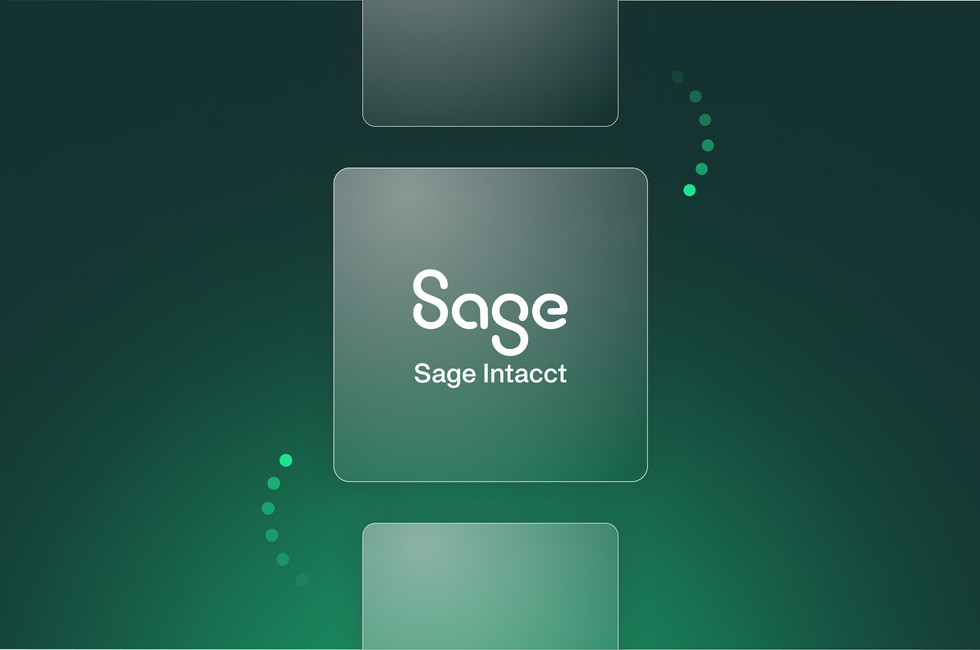
Five ways to empower your finance team with seamless data flows



Drawing financial information together and automating workflows can provide financial managers with a valuable real-time view of expenditure across a business – and much more.
By submitting this form, you agree to receive emails about our products and services per our Privacy Policy.
Editorial note: This article is a derivative of the Raconteur data-driven finance insights
Accuracy and transparency are key components of the finance function. Therefore, data that’s correct, complete and current is a vital part of any CFO’s toolkit. Despite this, many organizations still rely on disconnected systems and processes to manage their expenditure.
With a spending platform that consolidates financial data from across the enterprise, finance teams can easily close the month and make more informed decisions. In fact, a seamless flow of financial data can deliver benefits in several areas of the business. Here are just five of them.
1. A business-wide view of spending
When reimbursements, reconciliations and invoices are processed manually, errors inevitably occur. Manual processes are hard to scale up across different entities or regions, further muddying the waters. Moreover, the slow process of compiling financial data manually makes it impossible for businesses to track all their spending in real time.
If financial data is trapped in different parts of the business, this can cause problems in terms of auditing, regulatory compliance, and the enforcement of spending policies. This ramps up the risk of fraud and makes it harder to quantify how the firm’s spending intersects with its ESG goals.
“You have various sources of the truth instead of having everything centralized,” says Konstantin Dzhengozov, co-founder and CFO of Payhawk, an all-in-one spend management platform for global business payments, expenses, and multi-currency cards.
On the other hand, a fully connected view of how the whole business is operating financially makes reporting easier and enables more accurate financial forecasting and budgeting.
“You’re reviewing one system that does all the heavy lifting for you,” Dzhengozov explains. “Every expense is categorized correctly and pushed directly into your accounting system.”
f
How to enhance spend visibility and control with Payhawk
2. Real-time reconciliation
Many financial managers still spend much of their time performing low-value tasks such as chasing receipts and matching up transactions manually. “This prevents them from really understanding the business and helping all the functions make sense of limited resources and how to use them most efficiently,” Dzhengozov says.
MDM Props, a London-based art and events fabrication company, is a Payhawk user. The firm used to manage finance manually, which involved collecting paper receipts. If it couldn’t find these, it couldn’t claim back the VAT on those transactions.
“We spend a lot on materials for events and can get VAT bills of around £240,000 just for one quarter, so missing out on the reclaims was massive,” recalls Uchenna, a finance manager at the company.
Payhawk enables businesses to automatically consolidate card spending and receipt capture from across the organization and reconcile accounting data with banking information.
“Our card-holders can now photograph the receipt, upload this to the app, and select a spend category in seconds,” Uchenna says. “This is no effort for them, and it can save the business thousands of pounds.”
Payhawk’s invoice reconciliation software, meanwhile, automatically pulls the relevant data from an invoice and ensures that any expenditure is allocated correctly.
Dzhengozov explains: “You can create different workflows – including who needs to view it and who has to approve it – and extract all the data from the invoice or expense document that’s been uploaded, including bank details, payment terms and when the payment needs to be made.”
All of this makes it much faster and less stressful for the finance team to close the month, meaning that it can spend less time chasing receipts and more time analyzing data for strategic insights.
3. Actionable financial data for managing budgets
Software that can automatically generate detailed and accurate reports on financial activities can help the C-suite to make more informed budgetary decisions. Indeed, Dzhengozov believes it’s vital that financial reports include timely, actionable items.
Software-as-a-service subscriptions, for instance, have become a big area of spending that should be closely monitored.
“You need them all to be visible in one place, so you can see how much you’re spending on various subscriptions and what’s going to happen next month, including which ones are due for renewal,” he explains.
This connected view of accounts-payable data is also vital for managing financial commitments effectively, says Dzhengozov, who adds: “You can easily see and predict your cash outflows and inflows with a solution like Payhawk.”
4. Effective ESG oversight
Environmental, social and corporate governance (ESG) is quickly becoming essential to doing business. Recognizing this, Payhawk has partnered with Lune to launch Payhawk Green, a platform designed to help companies make more sustainable spending decisions.
The app enables them to automatically quantify the carbon dioxide emissions associated with purchases on Payhawk corporate cards. As Dzhengozov notes, “is crucial if you want to set good ESG practice in your company.”
The platform can also be customized to easily collect and manage ESG data for suppliers, thereby improving supply chain transparency.
Businesses can use these features to help them manage their scope-three emissions and ensure compliance with regulatory regimes such as streamlined energy and carbon reporting, as implemented by the Companies (Directors’ Report) and Limited Liability Partnerships (Energy and Carbon Report) Regulations 2018.
5. Faster international payments
Making payments across borders is often a costly, complex and slow process. In some cases, firms must wait hours or even days for a transaction to be approved.
Payhawk counteracts this through SEPA Instant, a pan-European network for instant bank transfers in euros. More than 99% of transactions are completed in less than five seconds – the kind of speed needed to widen supplier choice and support rapid international growth.
The fact that Payhawk connects to 3,000-plus banks across the EU and offers a range of payment methods eliminates much of the user’s administrative burden when it comes to establishing and managing new bank accounts. This resolves many issues when changing card issuers and accounting systems upon entering a new territory. Another benefit is replicating financial workflows and processes across different regions or units.
“Once you’ve set up the system, it’s very easy to add units and companies to the mix,” Dzhengozov says. “You’ll really have a global view.”
A note from us
Can your finance team tackle CO2 spend reporting, faster international payments, reconcile expenses in real time, and more? Book a personalized demo to see how Payhawk can seamlessly make your finance data flow, giving you complete spending visibility for vital data-driven decisions.
Trish Toovey works across the UK and US markets to craft content at Payhawk. Covering anything from ad copy to video scripting, Trish leans on a super varied background in copy and content creation for the finance, fashion, and travel industries.
Related Articles


Sage Intacct integrations with spend management: Worth it?

